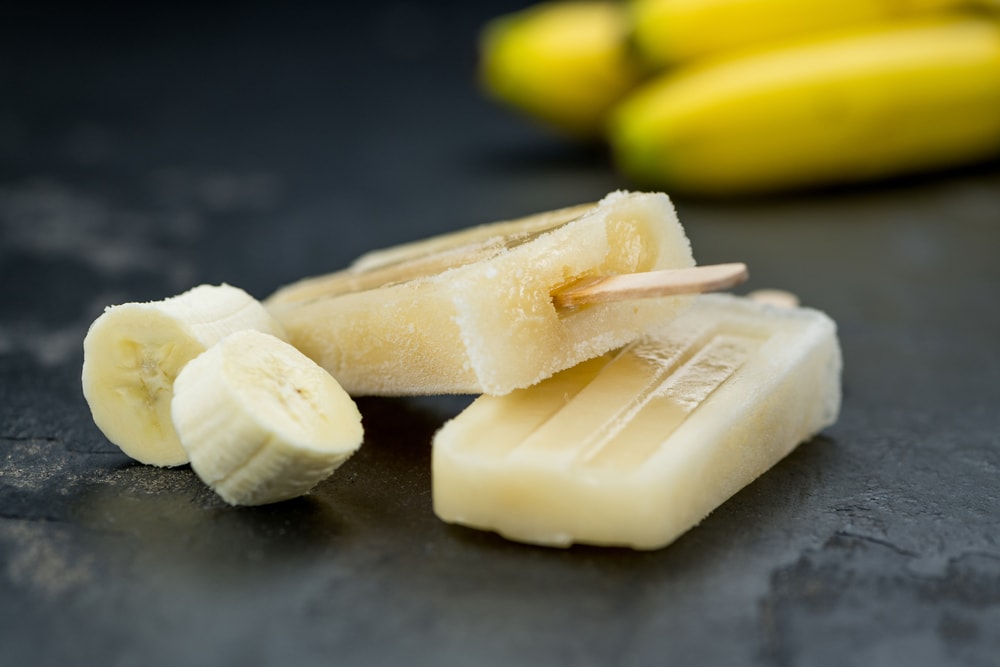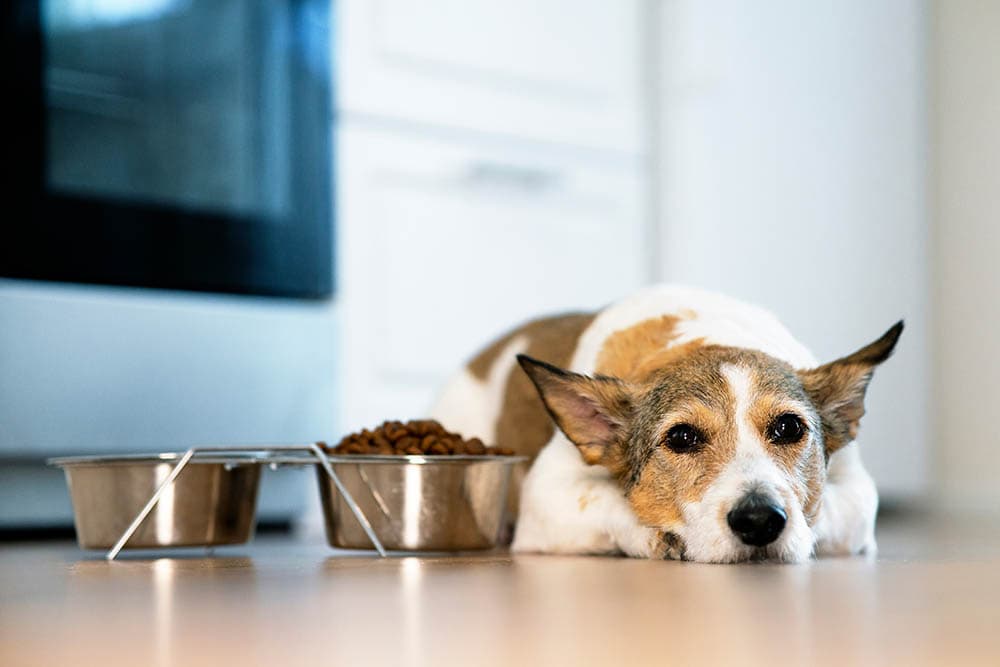Original Article: https://www.dogster.com/ask-the-vet/my-dog-ate-a-popsicle-stick
Click to Skip Ahead
Popsicles are among summer’s many pleasures. Your dog likely thinks so too! Some dogs like them so much that they eat the stick just to get more of that sweet juice. However, this is incredibly dangerous.
If your dog has eaten a popsicle stick, contact your veterinarian immediately. Popsicle sticks can be a choking hazard, get lodged in the intestines, or even perforate the digestive tract. Don’t try the wait-and-see approach; call your vet right away if your dog ate a popsicle stick.


What to Do If Your Dog Ate a Popsicle Stick
First, call your vet. Hopefully, you have someone else with you who can remove your dog from the area to make sure they can’t eat more sticks and who can keep an eye on them while you’re on the phone. Your vet will want to know what size your dog is, how many popsicle sticks they ate, if they chewed the stick, what kind of popsicle it was, when the stick was eaten, and if your dog is showing any clinical signs. The more detailed answers you can give to these questions, the better they will be able to figure out a treatment that will be best for your pup.
Next, get them to the vet’s office. Don’t give your dog anything at home unless instructed to do so by your veterinarian. There’s a belief that bread can help cushion foreign objects to better protect the stomach, but this can actually lead to more complications, so don’t feed them anything without your vet’s instructions. Also, don’t induce vomiting unless the veterinarian says to do so.
Keep an eye on your pup while you travel to make sure they don’t start showing severe signs.

If you need to speak with a vet but can’t get to one, head over to PangoVet. It’s an online service where you can talk to a vet online and get the personalized advice you need for your pet — all at an affordable price!
Are Popsicle Sticks Safe for Dogs?
Popsicle sticks aren’t toxic to dogs per se, as they are typically made of birchwood, though you may find different brands made with other types of wood or even plastic. It doesn’t really matter what it’s made out of, as your dog won’t be able to digest it, so it will have to come out basically unchanged one way or another.
So, while popsicle sticks may not be toxic to dogs, they are dangerous if eaten. Here’s why.
1. Choking Hazard
A popsicle stick is long and flat, and if swallowed whole, especially by a small dog, it can become lodged in the throat, causing the dog to choke. Choking typically consists of uncomfortable hacking and gagging, but it can also make it difficult for a dog to breathe or it can even cut off their air supply completely. Choking is an emergency.

2. Intestinal Obstruction
Popsicle sticks aren’t digestible, no matter how long they stay in a dog’s system. They will likely continue to travel through the stomach and intestines with other digesta until they can’t travel any farther. The intestines comprise a long, coiled tube with multiple twists and turns that can be difficult for something like a popsicle stick to navigate, causing it to potentially get caught in one of the curves.
When something gets lodged in the intestines, it can block all progress, making it so other food and feces can’t get through. This leads to a host of issues that can make your dog extremely sick. An intestinal blockage is an emergency situation.
3. Perforation
Your dog devouring a popsicle stick whole is still not considered a positive thing, but if they crunch it into slivers and then swallow these, that is far worse. Not only do those splintered pieces pose the same threat of choking and obstructing, but they also can perforate or pierce the digestive system anywhere along its path. Perforations are painful, and worse, they allow all the bacteria and other items that are so useful to the digestive system into other areas of the body where they can do serious harm. Digestive perforations are an emergency.



Signs That Your Dog Ate a Popsicle Stick
The only way that you might know that your dog gulped down a popsicle stick is if you see it happen. Another way might be when you go to throw away popsicle-related trash and notice that you’re short one stick or if your dog raided the trash can and is caught licking another one.
Otherwise, you may have to wait for signs to show up before you find out about your dog’s appetite for sugary syrup-covered wood.
- Coughing, hacking, or gagging
- Difficulty breathing, gasping for breath
- Loss of appetite
- Vomiting, diarrhea, constipation
- Stomach pain
- Lethargy
- Change in behavior: hiding, irritation, clinginess, etc.
Any of these signs warrant a trip to the vet. Be as quick as possible if your dog is having difficulty breathing, has severe stomach pain, or has a fever.

How Will a Veterinarian Treat a Dog That Ate a Popsicle Stick?
Your vet’s main goal is to remove the popsicle stick with the least amount of damage. The way that they go about doing this will vary by the situation. They will start with an examination of your dog to determine if any emergency signs need to be treated first. They may then use ultrasound to find out where the popsicle stick is.
Depending on the situation, the removal of the popsicle stick may follow one of several routes. If the stick was consumed recently, the vet may induce vomiting with specific medication to get your pup to puke out the stick. This may not be the best method for sticks that have been chewed, however, as they can cause damage on the way back up.
For large dogs that didn’t chew the stick, a wait-and-see method may be effective, essentially allowing the pup to pass the stick on their own. This may mean hospitalization and close monitoring for the development of other signs until the popsicle stick is passed.
If the stick is still in the stomach and the clinic has the tools, endoscopy may be a way to retrieve it. This will require anesthesia, and not every clinic will have access to an endoscope, so a referral may be necessary.
The next option is surgical removal. This is especially likely if the stick is lodged somewhere in the digestive tract or is splintered to the point that a perforation may occur. Surgical removal also requires anesthesia and may be accompanied by hospitalization time.
Can You Prevent a Dog From Eating a Popsicle Stick?
Dogs are notorious for eating things that they shouldn’t, so the best way to protect them is to keep those things out of their mouths. Regarding popsicle sticks, don’t share these sweet treats with your canine companion. Clean up your trash immediately after eating one, and make sure the trash is stored in a container that can be locked or behind a closed door that your dog can’t get through.
Tell other members of your family and guests not to share popsicles with your dog and how to properly dispose of the trash so your pet can’t get it. Always supervise your dog when someone is eating popsicles or anything else, for that matter, around your pup.
As a quick note, the stick isn’t the only potentially dangerous part of a popsicle; the ingredients can also be an issue. Popsicles made with artificial sweeteners, mainly xylitol, can be toxic, as can popsicles made with chocolate. The high sugar content can make a dog sick, and the wrapper can also pose a problem if eaten.
Overall, a popsicle and any part of one shouldn’t find their way into your dog’s diet.



Conclusion
Your dog will likely take an interest in popsicle sticks, as they often have traces of the sweet goodness that attracts us to them in the first place. Your dog eating a popsicle stick should be considered an emergency, and you should contact your vet immediately. While on the phone, keep a close eye on your pet to make sure they can’t get into more popsicle sticks and aren’t showing severe signs. Follow your vet’s instructions, which will likely include visiting the clinic as soon as possible to get the popsicle stick removed one way or another.
Featured Image Credit: DenisZav, Shutterstock
Source: Dogster












